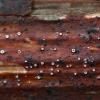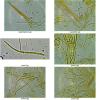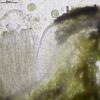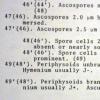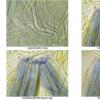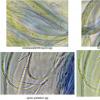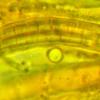
15-12-2025 15:54
 Johan Boonefaes
Johan Boonefaes
Unknown anamorph found on the ground in coastal sa

15-12-2025 15:48
 Danny Newman
Danny Newman
Melanospora cf. lagenaria on old, rotting, fallen

15-12-2025 07:05
 Danny Newman
Danny Newman
Pseudosclerococcum golindoi (det: Zotto)near Cosb

15-12-2025 11:49
 Danny Newman
Danny Newman
ITS sequences from the following two collections B

15-12-2025 07:09
 Danny Newman
Danny Newman
indet. Rutstroemiaceae sp. on unk. fallen leavesMc

15-12-2025 12:34
 Danny Newman
Danny Newman
indet. Rhytismataceae on oak leafnear Purchase Roa

09-12-2025 12:06
 Andgelo Mombert
Andgelo Mombert
Bonjour,Je recherche l'article concernant Hypobryo

12-12-2025 18:39
Mirek GrycHello everyone.Macrofeatures similar to Mollisia b
 Bonsoir à tous,
Bonsoir à tous,Suite et bientôt fin de mes récoltes sur renouée du Japon. Ici je pense à Stictis radiata, d'abord parce que les apothécies sont nettement plus petites (max. 0,3 mm de diamètre) que chez Stictis stellata (diamètre parfois dépassant le mm) montré tout récemment sur Fallopia japonica toujours et que d'autre part, les spores sont ici larges de 2-2,5 mu.
Qu'en pensez-vous ?
Bernard


Thanks for your message !
I will try to make a cut of apothecium but I admit that I do not know what are the periphyses. Would you possibly a drawing or a microscopic picture so that I know what I have to observe? I will try to redo pictures spores alive.
Regarding the iodine reaction, I just noticed a very slight blue color and diffuses into the ascus (especially upper half) with lugol but not a color "deep blue" suitable for this species.
Bernard

What is meant with periphysoids (not periphyses, sorry) you can see here.
Sherwoods distinction is perhaps a bit weird, and her opinion about amyloidity may be wrong as she appears not to have understood the influence of KOH and Melzer's.
But I must admit I have no clear concept of thse two species.

A red reaction inside the ascus could be due to glycogen and would then be called dextriniod, but then it should be seen also after KOH, or in Melzer without KOH. What reacts blue after KOH (I think the ascus wall surface) must be red in IKI without KOH (hemiamyloid). See my homepage:
http://invivoveritas.de/articles/iodine-reaction-in-ascomycetes-why-is-lugols-solution-superior-to-melzers-reagent/
Fig. 2 and 5.
